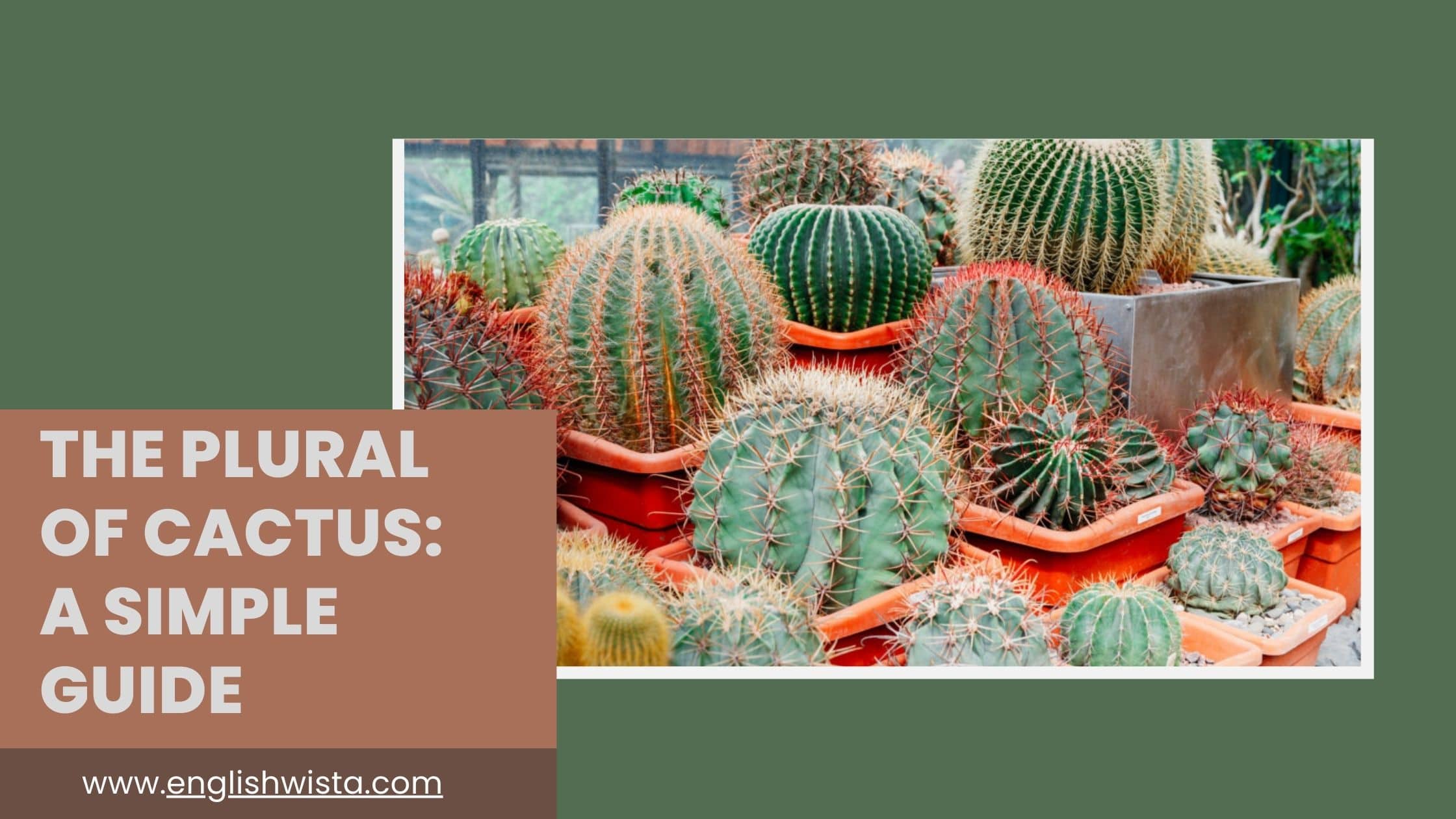Have you ever been shopping for plants and found yourself wondering, “Is it cactuses or cacti?” Don’t worry you’re not alone. The word cactus often causes confusion because it doesn’t behave like most regular English nouns. That’s why today, we’re going to take a fun and easy journey into the world of the plural of cactus. By the end of this article, you’ll know exactly how to use it, when to use it, and why it sometimes has more than one correct plural form.
Let’s dig into it step by step, keeping things simple, clear, and a little bit playful.
What Does “Cactus” Mean?
Before we dive into plurals, let’s quickly define the word.
A cactus is a type of plant that usually grows in dry places like deserts. Cacti (yes, we’re already sneaking in the plural!) are known for their thick, fleshy stems that hold water, and many have spines instead of leaves.
So whenever you see a plant that looks like a spiky green water tank, you’re probably looking at a cactus.
What Is the Plural of Cactus?
Here comes the big question: What’s the plural of cactus?
The answer is:
- Cacti
- Cactuses
Yes, both are correct! This is what makes the word so interesting. You can use either cacti or cactuses depending on the context, your preference, or the style of English you’re following.
Why Are There Two Plurals?
This happens because cactus comes from Latin. In Latin, many words ending in “-us” form their plural by changing to “-i.” That’s why cactus can become cacti.
But English has its own way of making plurals: usually by adding “-es” or “-s.” So, when the word entered English, people also started using cactuses.
Over time, both versions became accepted.
Which One Should You Use?
Great question! Let’s break it down:
- Cacti: This is the more traditional form. You’ll see it often in science books, botanical studies, or more formal writing.
- Cactuses: This is the simpler, more “English-friendly” form. It’s common in everyday speech, casual writing, and modern usage.
So if you’re chatting with a friend, you might say “I bought three cactuses for my windowsill.” But if you’re reading a botany article, you’ll likely see “Several cacti grow in this desert region.”
Both are correct you won’t be wrong either way!
Example Sentences with Cacti and Cactuses
To make things super clear, let’s look at some sentences.
Using Cacti:
- The desert is full of tall cacti.
- I saw many different types of cacti during my trip to Mexico.
- Scientists study how cacti store water in their stems.
Using Cactuses:
- My neighbor’s garden has so many cactuses.
- We bought three small cactuses from the plant shop.
- Cactuses are easy to care for because they don’t need much water.
See how both versions fit perfectly? It’s all about which one feels natural in the moment.
Is Cactus Singular or Plural?
To clear up any confusion: cactus is singular.
That means it refers to just one plant.
- Example: “This cactus is very tall.”
The plural forms are cacti or cactuses.
- Example: “These cacti are beautiful.”
- Example: “I like those cactuses by the window.”
Origin of the Word “Cactus”
Here’s something fun: the word cactus comes from the Greek word kaktos, which was used to describe a type of spiky plant. Later, the Latin language adopted it as cactus.
When English borrowed the word, it kept some of that Latin flavor, which is why we have the plural cacti. But English speakers also created their own version cactuses.
So, the history of the word is the reason we have two perfectly acceptable plurals today.
Similar Words with Two Plurals
Cactus isn’t alone in having two plural forms. Here are a few more examples:
- Octopus → octopuses / octopi
- Focus → focuses / foci
- Fungus → fungi / funguses
This shows that English is flexible it accepts both its Latin roots and its modern, simpler patterns.
Common Misconceptions
Let’s clear up some myths:
- Myth 1: “Only cacti is correct.”
Nope! Both cacti and cactuses are correct. - Myth 2: “Cactuses is wrong or informal.”
Not true. Cactuses is recognized in dictionaries and widely used. - Myth 3: “You should never mix them.”
Actually, you can use either depending on the tone of your writing. Just try to stay consistent in the same piece of writing.
Collective Noun for Cactus
Here’s a fun extra fact: when you see a group of cacti together, you can simply call it a stand of cacti or a stand of cactuses.
Botanists sometimes use “stand” to describe a group of plants growing naturally in one place. So next time you’re hiking in the desert, you can say, “Wow, look at that stand of cacti!”
Fun Facts About Cacti
To keep things interesting, let’s throw in a few cactus facts:
- Water storage champions: Some cacti can hold hundreds of liters of water.
- Long lives: Many cacti can live for decades, and some survive over 200 years.
- Flowers: Despite their tough looks, cacti produce some of the most beautiful flowers in the plant world.
- Global spread: While native to the Americas, cacti are now grown all over the world as houseplants.
- Cultural symbol: In Mexico, the cactus is a national symbol and appears on the country’s flag.
Quick Recap
Let’s sum everything up in a simple list:
- Cactus = singular (one plant).
- Cacti = plural (Latin form).
- Cactuses = plural (English form).
- Both plurals are correct, so use the one you prefer.
- In science or formal writing, cacti is more common.
- In casual speech or writing, cactuses works just fine.
Conclusion
So, what’s the plural of cactus? It’s both cacti and cactuses. You now know why there are two options, when to use each, and how to spot them in real-life sentences.
Language is full of surprises like this. Sometimes there’s not just one “right” answer, and that’s part of what makes English so flexible and fun.
Next time you’re in a plant shop, you can confidently say, “I’d like two cacti, please,” or “I’ll take three cactuses.” Either way, you’ll be perfectly correct.
Now that you’re an expert on this prickly topic, maybe it’s time to treat yourself to a cactus or maybe even a few cacti!



